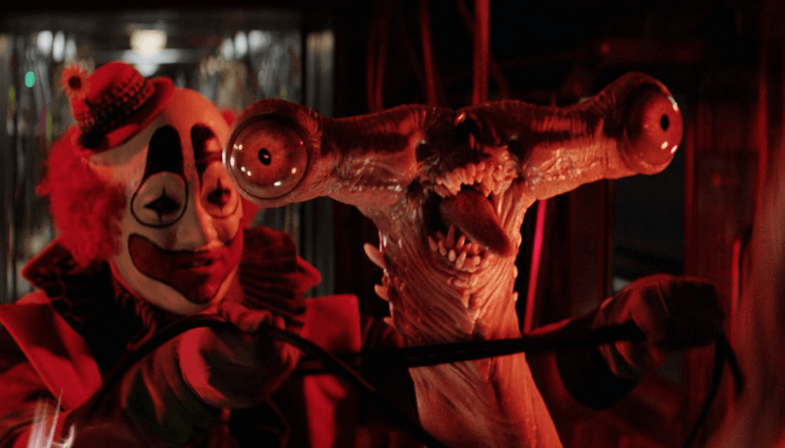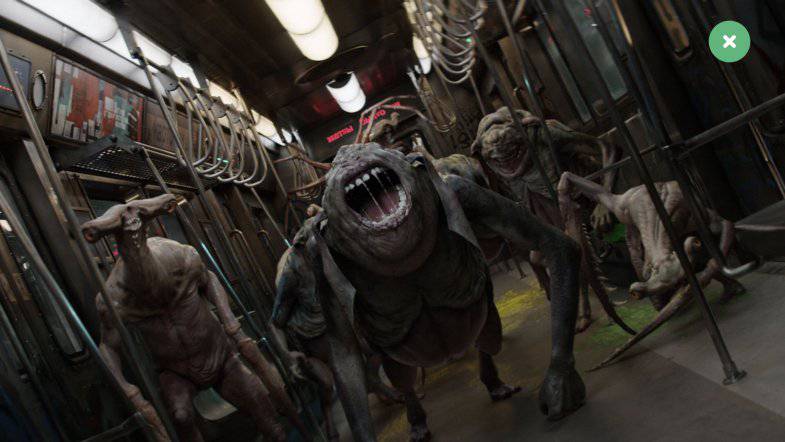cineSync bursts into the booming Chinese blockbuster market with ‘Animal World’
Hollywood, New York, London, Vancouver – these major cities are commonly considered to be the nexus of modern blockbuster film production. They’re the entertainment capitals of the world, responsible for the industry’s most recognised cinematic moments.
China is quickly catching up as one of the globe’s largest film markets. Not only did China account for US$7.9 billion in global box office ticket sales in 2017 – rivalling US and Canada’s US$11.1 billion and putting the country on track to be the world’s top film market – but the nation continues to produce a diverse range of spellbinding, homegrown cinematic content; content that require a large investment in VFX.
Bang Bang Productions is well aware of this need. Boasting a 50-strong team, Bang Bang tackles many of the VFX-heavy films produced in China today. The studio certainly lives up to the tagline “painless VFX for kick-ass Chinese movies”.
John Dietz, Bang Bang’s VFX producer, has lived in China for last seven years – and he’s had cineSync alongside him through every step of the studio’s evolution.
“Our focus is on bringing high-quality visual effects to the Chinese film industry,” says Dietz. “About five years ago, the Chinese business model for VFX was a flat bid. Nowadays, the whole system is shaking out into a fast-growing market. As part of the original team using cineSync at Rising Sun Pictures, I knew a visual and interactive review system would be vital in this new market.
 “The Bang Bang team is constantly learning, chasing better-quality results and fighting tighter budgets every day – but cineSync takes the growing pains away with clear communication. That’s absolutely vital in the market within which we operate.”
“The Bang Bang team is constantly learning, chasing better-quality results and fighting tighter budgets every day – but cineSync takes the growing pains away with clear communication. That’s absolutely vital in the market within which we operate.”
International VFX
With global collaboration on the rise and vendors dispersed across multiple time zones, solutions like cineSync allow the expanding Chinese film market to integrate on the international level.
Scenes for the latest Chinese epic are often distributed to multiple locations, meaning Bang Bang must communicate with studios in America, Australia, Europe, and at home in China, on a daily basis.
“We always use cineSync when working with our foreign vendors,” Dietz avers. “It’s the industry-standard tool for handling feedback, whether we happen to be talking with Weta, Rising Sun Pictures, Fin, or any other studio. Whoever we’re working with, they’re familiar with cineSync and they know how it works.
“Being based predominantly in Beijing, we adapt to some significant time differences,” he continues. “Using cineSync, we can minimise the hassle of varying hours. With real-time feedback, there’s no confusion about what needs to be done and the message can be conveyed quickly and effectively. That way we don’t lose precious time. We all stay on the same page, no matter the distance.”
Tight collaboration is an absolute necessity when seeking to achieve high-quality VFX on a Chinese budget. Chinese films are dependent on the domestic box office due to lack of DVD sales or international showings, which means budgets are typically much tighter. Selecting the right studios to get the most out of a scene makes all the difference in this market. Few other films have demonstrated this need for close communication, shared experience, and synchronised vendor input than the Michael Douglas- and Yi Feng Li-starring Animal World.
Collaborating across the Animal World
Bang Bang recently completed production on the Chinese action/sci-fi epic, which features more than 1,000 VFX shots managed across 14 different vendors.
Based on a comic book, Animal World is a dark gambling fantasy set onboard the sinister warship, Destiny, where characters are forced to kill each other in a mercilessly cruel, high-stakes game of rock-paper-scissors.
 Animal World is a surreal salmagundi of CG – featuring samurai clowns battling aliens in railway carriages and and more besides. Yet the Bang Bang team worked with a budget much lower than that of your standard Hollywood blockbuster. cineSync ensured that all involved knew the game plan from start to end, and would work towards shared concepts rather than diverging from the director’s aesthetic intentions.
Animal World is a surreal salmagundi of CG – featuring samurai clowns battling aliens in railway carriages and and more besides. Yet the Bang Bang team worked with a budget much lower than that of your standard Hollywood blockbuster. cineSync ensured that all involved knew the game plan from start to end, and would work towards shared concepts rather than diverging from the director’s aesthetic intentions.
“The power of cineSync is its ability to streamline communication,” says Dietz. “When you work with Western artists, there’s a lot to talk about in terms of understanding Chinese aesthetics and style. Even simple tools like colour palette and composition can have a noticeable impact on how you communicate and tell the story.
“It can be very hard to express these thoughts without a flexible visual aid. cineSync eradicates that issue.”
Animal World‘s psychedelic dream sequence went through a great deal of cineSync sessions, for instance, as artists tackled an assortment of data-heavy element simulations such as water, clouds, and ice. Locking down the feel, look, and tone took a good deal of iterations. Soon enough, cineSync’s automatic, post-session PDF downloads became Bang Bang’s main method for tracking these changes, as each CG asset needed to fit seamlessly within the overall scene, despite the contributions of multiple vendors.
“The sequence was trippy,” says Dietz. “We spent a lot of time going back and forth with the client because it was so challenging to nail down. Going from the storyboard to layout, attaching effects, and then rendering – it got quite complicated.
“Thankfully cineSync made it all possible, letting us easily check frame-by-frame for any discrepancies in the shots. Thanks to that, the end result was fantastically good!”
What’s next for Bang Bang?
Bang Bang tends to works on four-to-six major feature films at any given time, and its wide-ranging pipeline spans a diverse set of genres. Films on the slate currently span from fantasy to western, from films about the gods to tales of war.
“The Chinese film market is a busy place, to say the least,” concludes Dietz. “We have to stay on top of a lot of projects, and for that reason I’m constantly recommending cineSync to fellow studios. It’s an amazing tool for communication, editing in visuals, and simply staying on track in post-production. And it’s totally necessary for the work we do in this varied, exciting and emerging capital of film production.”

